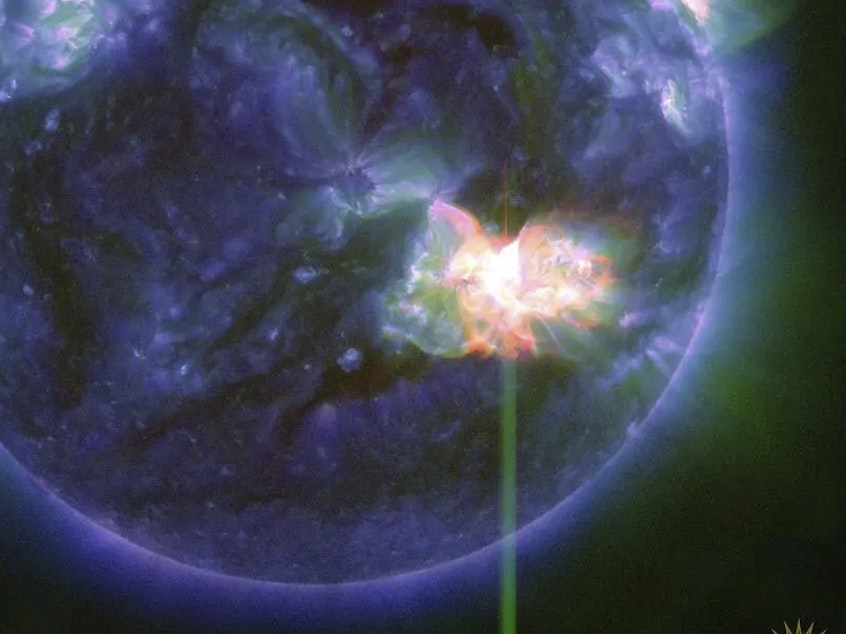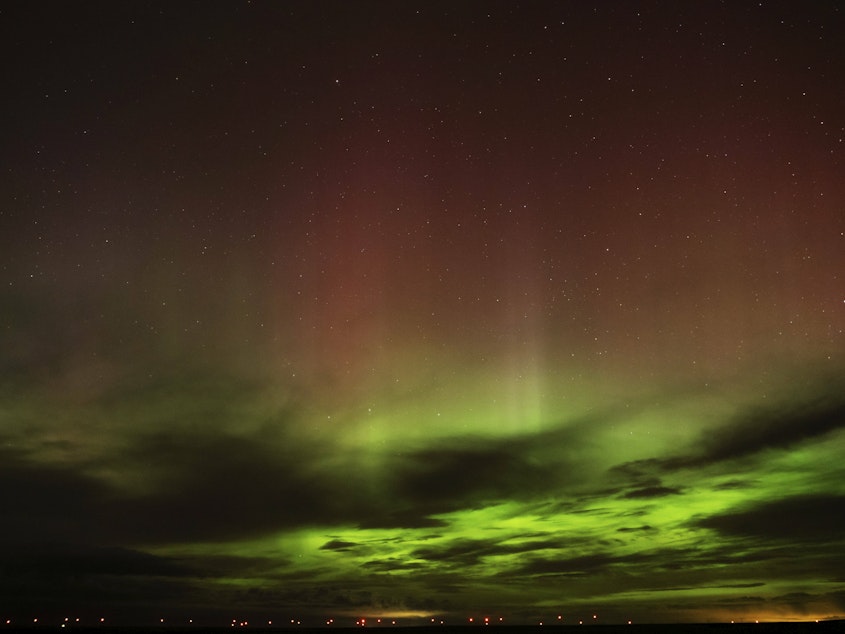Solar storm could make Northern Lights visible from Seattle

A geomagnetic storm is hitting the Earth right now. But what does that mean for people in the Seattle area?
While the storm has the potential to impact satellites, GPS, radios, and power grids, its most immediate impact for the Pacific Northwest might be more positive — a rare glimpse at the Northern Lights.
"We might have the opportunity to see the auroras fairly well from here in Seattle tonight, depending on the timing of when this event impacts the Earth," said Alice Enevoldsen, a local astronomer and a volunteer solar system ambassador for NASA.
That said, Enevoldsen said predicting when and where the auroras will be visible is kind of like predicting a rainbow.
You can predict that the conditions for a rainbow will be present, “but you are not able to predict there is going to be a rainbow at 2.30 p.m. visible from South Seattle College. That's not the level of specificity we have. And so for the auroras it's kind of similar," Enevoldsen said.

Even though it's not a guarantee, the conditions are better than normal and there are things you can do to increase your chances of seeing the lights should they be visible.
Sponsored
- Find a spot that's dark. You may feel it's worth driving out of town. If not, just don't stand directly under a streetlamp. Try to find somewhere with lower light pollution.
- Face north, ideally with a good view of the horizon.
- Keep an eye on the numbers tonight and over the weekend. Solar weather is incredibly complex. You don't have to know the ins and outs in order to see the lights, but you want to keep an eye on something called "Kp" short for Planetary K-index, which measures the level of solar particle radiation by its magnetic effects. If the Kp is six or higher, head to the spot you've picked out for viewing. If the Kp hits eight, Enevoldsen said everyone should head outside.
- Auroras are best at midnight or after midnight as long as they’re actually happening at that time.
- Take a camera with you and set it to long exposure, like the night sight setting on your phone’s camera. Taking a long-exposure image of the northern part of the sky will allow you to capture the beginning phases of an aurora before your eyes are able to pick it up.
The aurora borealis is more likely to be visible because this is a particularly large solar storm, which means the sun is spitting more particles toward Earth that affect the planet's magnetic field.
“There’s always material coming at us from the sun,” Enevoldsen said. "But this is sort of a bubble of it that's been popped and pushed our way and so there's more of it and it's faster when it's coming towards us and so that has a bigger effect on what's going on here."
For the average Seattleite, Enevoldsen said she doesn't anticipate people will see big interruptions to daily life.
She said it may take a little longer for GPS to connect, or there may be a little fluctuation in the power grid. But she's not expecting large, rolling blackouts or anything of that magnitude.
Sponsored
This storm reaches the level where more attention is paid and people like power-grid operators need to ensure they have plans in place, but it's not the level where individuals need to freak out, she said.
"We're not going to have an apocalypse with this event as far as I can tell," Enevoldsen said.
RELATED: A new form of Northern Lights discovered in Finland – by amateur sky watchers
The solar storm has already begun to hit Earth. However, given there are multiple coronal mass ejections headed towards us from the sun, it’s possible that ideal conditions will still be happening when the sun is going down.
Any viewing of the Northern Lights will need to happen after dark.
Sponsored
However, the ability to see something out of the ordinary isn’t confined to nighttime.
Enevoldsen said anyone who still has their glasses used to view the recent solar eclipse can put them on right now, look at the sun, and see the sunspot that has sent this solar weather toward Earth.
That spot is roughly 16 times the diameter of the Earth.




